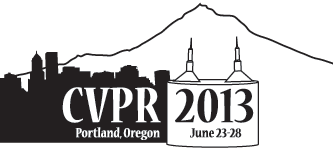-
Can a Fully Unconstrained Imaging Model Be Applied Effectively to Central Cameras?
AbstractTraditional camera models are often the result of a compromise between the ability to account for non-linearities in the image formation model and the need for a feasible number of degrees of freedom in the estimation process. These considerations led to the definition of several ad hoc models that best adapt to different imaging devices, ranging from pinhole cameras with no radial distortion to the more complex catadioptric or polydioptric optics. In this paper we propose the use of an unconstrained model even in standard central camera settings dominated by the pinhole model, and introduce a novel calibration approach that can deal effectively with the huge number of free parameters associated with it, resulting in a higher precision calibration than what is possible with the standard pinhole model with correction for radial distortion. This effectively extends the use of general models to settings that traditionally have been ruled by parametric approaches out of practical considerations. The benefit of such an unconstrained model to quasipinhole central cameras is supported by an extensive experimental validation.
Related Material
[pdf][bibtex]@InProceedings{Bergamasco_2013_CVPR,
author = {Bergamasco, Filippo and Albarelli, Andrea and Rodola, Emanuele and Torsello, Andrea},
title = {Can a Fully Unconstrained Imaging Model Be Applied Effectively to Central Cameras?},
booktitle = {Proceedings of the IEEE Conference on Computer Vision and Pattern Recognition (CVPR)},
month = {June},
year = {2013}
}
These CVPR 2013 papers are the Open Access versions, provided by the Computer Vision Foundation.
Except for the watermark, they are identical to the accepted versions; the final published version of the proceedings is available on IEEE Xplore.
Except for the watermark, they are identical to the accepted versions; the final published version of the proceedings is available on IEEE Xplore.
This material is presented to ensure timely dissemination of scholarly and technical work.
Copyright and all rights therein are retained by authors or by other copyright holders.
All persons copying this information are expected to adhere to the terms and constraints invoked by each author's copyright.

